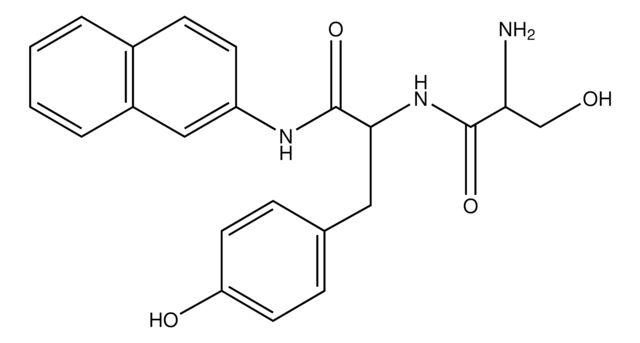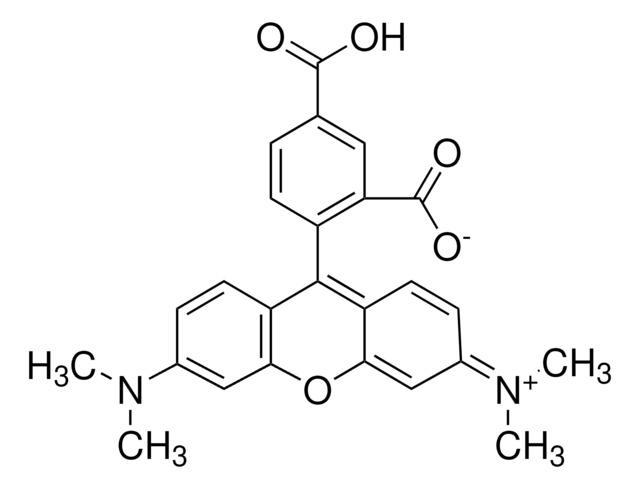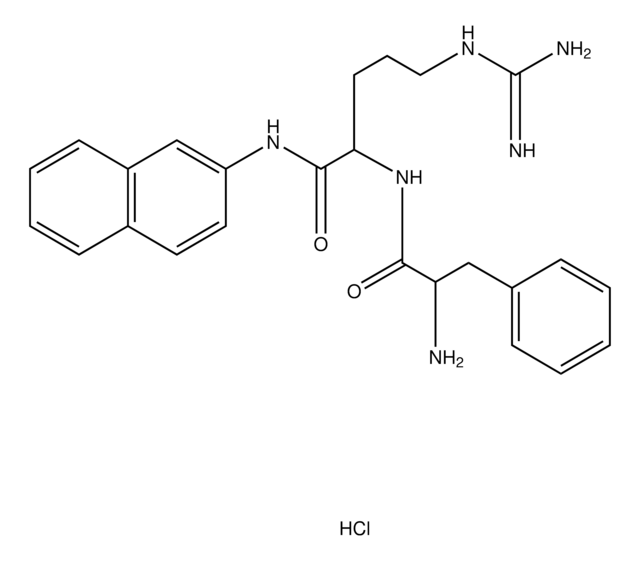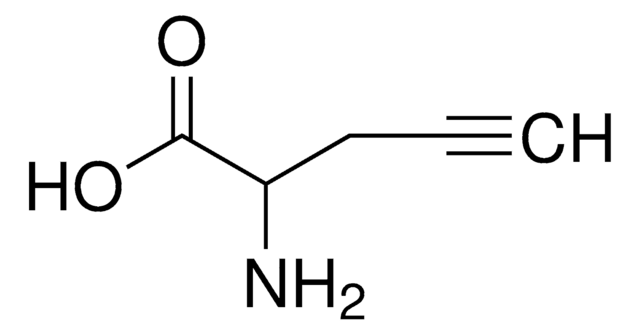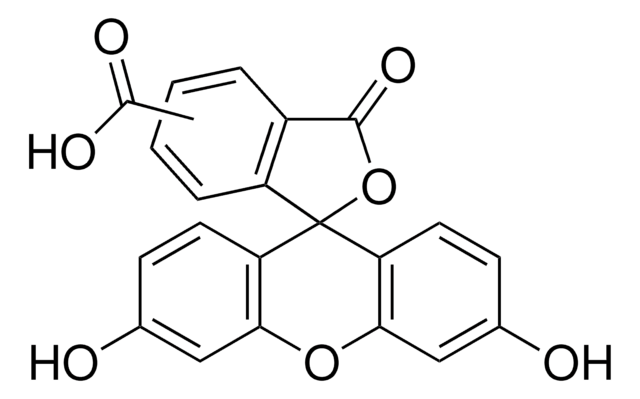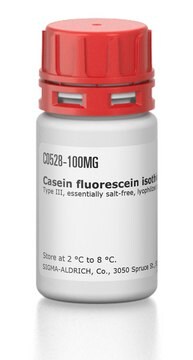Recommended Products
General description
N-terminal HIS-tagged fusion protein corresponding to full-length Green Fluorescent Protein, expressed in E. coli. Green fluorescent protein (GFP) is a cytoplasmic protein found in jellyfish Aequorea Victoria.
Biochem/physiol Actions
Green fluorescent protein (GFP) is genetically fused to many proteins in various species to generate non-reactive chimeras which are known to preserve their original biological activity as well as the fluorescent properties of native GFP. GFP acts as a reporter for gene expression and as a fusion tag for protein localization studies in live cells. It serves as a spectroscopic and microscopic probe to understand the biological functions of various systems. GFP is highly stable and can serve as a tool for in vitro studies.
Quality
Routinely evaluated as a standard on protein gels and western immunoblots, for calibration of fluorometers, and microinjection into cells and tissues.
Physical form
PBS containing 20% glycerol.
Storage and Stability
1 year at -20°C
Legal Information
GenBank is a registered trademark of United States Department of Health and Human Services
UPSTATE is a registered trademark of Merck KGaA, Darmstadt, Germany
Disclaimer
Unless otherwise stated in our catalog or other company documentation accompanying the product(s), our products are intended for research use only and are not to be used for any other purpose, which includes but is not limited to, unauthorized commercial uses, in vitro diagnostic uses, ex vivo or in vivo therapeutic uses or any type of consumption or application to humans or animals.
Storage Class Code
10 - Combustible liquids
WGK
WGK 2
Flash Point(F)
Not applicable
Flash Point(C)
Not applicable
Certificates of Analysis (COA)
Search for Certificates of Analysis (COA) by entering the products Lot/Batch Number. Lot and Batch Numbers can be found on a product’s label following the words ‘Lot’ or ‘Batch’.
Already Own This Product?
Find documentation for the products that you have recently purchased in the Document Library.
Customers Also Viewed
Sebastian Strauss et al.
Nature methods, 15(9), 685-688 (2018-08-22)
Although current implementations of super-resolution microscopy are technically approaching true molecular-scale resolution, this has not translated to imaging of biological specimens, because of the large size of conventional affinity reagents. Here we introduce slow off-rate modified aptamers (SOMAmers) as small
Sonit Kumar Gogoi et al.
Langmuir : the ACS journal of surfaces and colloids, 22(22), 9322-9328 (2006-10-18)
Recombinant Escherichia coli (E. coli) bacteria expressing green fluorescent protein (GFP) was used as a model system to investigate the antimicrobial activities of Ag nanoparticles (NPs). A convenient in situ method of Ag NP synthesis using sodium borohydride, in the
Vincent Jung et al.
Proteomics, 22(9), e2100031-e2100031 (2021-12-28)
Biolayer interferometry (BLI) is a technology which allows to study the affinity between two interacting macro-molecules and to visualize their kinetic of interaction in real time. In this work, we combine BLI interaction measurement with mass spectrometry in order to
J L Casey et al.
Protein engineering, 13(6), 445-452 (2000-07-06)
We produced a fluorescent antibody as a single recombinant protein in Escherichia coli by fusing a red-shifted mutant of green fluorescent protein (EGFP) to a single-chain antibody variable fragment (scFv) specific for hepatitis B surface antigen (HepBsAg). GFP is a
Elisa M York et al.
Biomedical optics express, 10(9), 4381-4394 (2019-10-01)
Autofluorescence of endogenous molecules can provide valuable insights in both basic research and clinical applications. One such technique is fluorescence lifetime imaging (FLIM) of NAD(P)H, which serves as a correlate of glycolysis and electron transport chain rates in metabolically active
Our team of scientists has experience in all areas of research including Life Science, Material Science, Chemical Synthesis, Chromatography, Analytical and many others.
Contact Technical Service